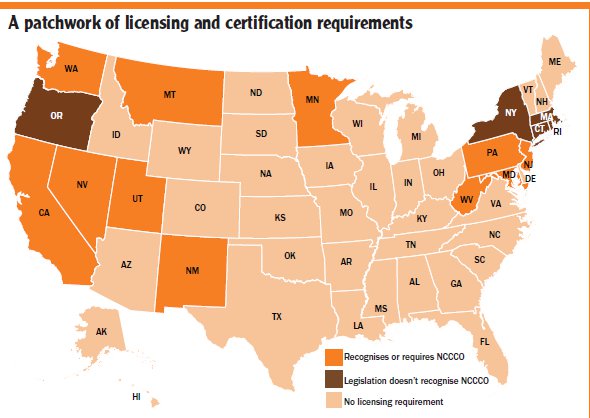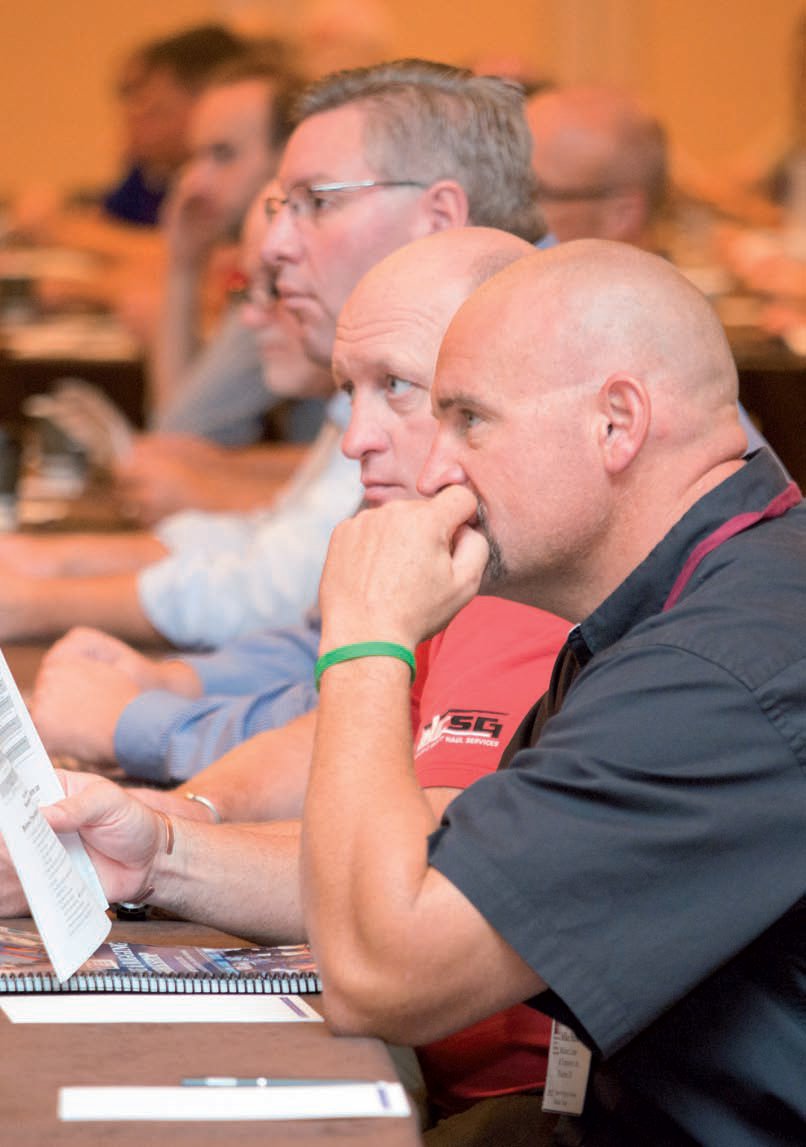Debates and delays
9 December 2013Each year at the SC&RA’s rigging workshop meet the US crane industry gathers together to discuss the most important issues affecting the US market. This year there was an atmosphere of anticipation with several major decisions from regulators dragging on and a noticeable changes in the US market yet to occur. Zak Garner-Purkis attended the event to hear what the US lifting industry had to say.
Crane training is an issue that is of constant relevance: new machines often require new skills and updated qualifications, the working environment also changes with time. presenting other challenges. Regulations are an aspect of this landscape that must be altered to reflect any developments.
In the US, training is made more complex by the differences between state and federal regulations. At the annual SC&RA rigging workshop in Orlando, Florida, this year the topic was at the forefront of dicussion.
Particular focus was placed upon OSHA's cranes and derrick rule's requirement on operator certification, which again were subject to a potential delay (indeed, after the event OSHA confirmed implementation would be delayed). The training industry is split between those, including the NCCCO (the biggest certification agency), that believe a requirement for testing by capacity misinterprets the intent of the team that put the rule together, and those who believe a delay isn't needed.
Cranes Institute of America's certifiying body Crane Institute Certification is one of those that tests by capacity, and believes this is the way to go. Director James Headley says, "We have federal OSHA which applies to all states and territories, but some states have their own OSHA plan. A state can have its own regulations, but the regulations can't be less stringent than federal OSHA. For example CalOSHA is much more stringent than federal OSHA and requires operator certification."
"A hot topic right now is what OSHA is going to do about the operator certification type and capacity law that was due to be required in November 2014. Crane Institute Certification (CIC) thinks it's reasonable for crane operators to be certified by type and capacity as the law currently requires and others want it taken out, which I can understand since their certifications will not meet the new law. We'll see what happens but CIC won't change its programme. We will continue to certify by type and have different capacity levels."
"The Cranes and Derricks Negotiated Rulemaking Committee (CDAC) was put together by OSHA to write the new cranes and derrick regulation. The committee met for a year and drafted the new regulation that went into effect in 2010, however OSHA allowed until November 2014 for operators to be certified, which was to be by type and capacity. There are currently four accredited certification programmes that OSHA has approved. Two of the four programmes have certifications for different capacity levels and will meet the new law. The other two programmes certify operators by type only, which means that the certifications they have issued will not meet the new law when it comes into effect."
"Many of the people complaining about this type and capacity requirement served on the CDAC committee that wrote the new law. In other words they wrote a law that the certification programme they support will not meet. How much sense does that make? If they thought that crane operators should be certified by type only they should not have written and approved a law that would be different from that. Now they want a law they approved changed."
The National Commission for the Certification of Crane Operators (NCCCO) was set up with the backing of the SC&RA, with the aim of offering a national certificate, and still certifies the majority of operators. It doesn't certify by capacity, believing that doing so is a misinterpretation of CDAC's intent to use the 17.5USt mark to differentiate by fixed- and swing-cab cranes.
Joel Oliva manager of program development and administration explains: "The new OSHA rule relating to operator certification/qualification requirements was published in November 2010 and the debate on its exact impact to the industry has gone on since then. The question is now whether an extension of the implementation date is going to happen, and if so when?"
"In general terms NCCCO doesn't object to extending the implementation of the rule. It's the way it's being handled that is the problem. It can be a difficult pill for employers to swallow because they have spent money on qualification/certification that are ensuring they are compliant. The safety benefits of certification are clear, but there is a compliance element that can't be ignored. Employers want to know what the rules of the game are, so they can abide by them. The longer it takes, the more difficult it will be for employers.
"To a certain extent OSHA can only do so much, their job is to enforce established safety regulations, the trouble is that sometimes the industry challenges whether the rule as written makes sense. 'Intent doesn't matter' is a quote you hear from OSHA and that's a problem, now we are getting their attention in these new safety initiatives and the need to clarify the rules through interpretation. Of course OSHA has a lot on its plate besides just the crane rule, but it is critical that decisions get made sooner rather than later"
Following the autumn workshop OSHA eventually decided to delay the operator certification requirement until November 2017. But as Steve Freckman, general manager of four Dawes Rigging and Crane Rental (part of the ALL Family of Companies) explains, that any relief is only temporary: "Eventually, there will be a great cost in time and money spent to certify the countless operators across the country that have not yet complied. The All Family of Companies has already required its crane operators to secure certification. But I think that for many companies in the US, it will be a major undertaking to ensure that their operators become certified by the implementation date. Fortunately for them, the Federal Government has delayed implementation of the law until November, 2017. Prior to that, when the implementation date was scheduled for November, 2014, we were starting to see a rising nervousness from various contractors that owned cranes and employed operators. I think there has been a great sigh of relief from many contractors, thanks to OSHA's delay. That relief is just temporary, however."
Around the committees
As always the committee meetings at the SC&RA event provided a key insight into the issues affecting those in the US crane market. At the governing committee meeting Rob Weiss, vice director at Cranes Inc., updated members about Steel Institute of New York's (SINY) law suit seeking to block revised New York City crane rules. Weiss said that the organisation would be launching a Supreme Court appeal to the New York second circuit court's decision to dismiss SINY's case. The case should make a major statement on the extent to which Federal law supersedes State law. This is crucial to a US lifting industry that faces a patchwork of regulation on issues like certification and crane component tracking.
The regular labour committee meeting discussed the Department of Transport's Hours of Service regulations, that may put additional restrictions on drivers' schedules by limiting the use of a restart period to once every seven days, as well as mandating off-duty breaks during the workday including two consecutive periods from 1am to 5am.
The stated goal of this rulemaking is to reduce excessively long work hours that increase both the risk of fatigue-related crashes and long-term health problems for drivers. Many at the committee meeting voiced the opinion that guidance from the industry was vitally important on this issue, but that rather than being about confrontation that the approach be about helping regulators to understand the gap that exists between enforcement and application.
The other topic involving OSHA at the conference was its compliance directive, a measure designed to get companies to fall in line with the governmental organisation's regulation. The labour commitee meeting decided that the SC&RA would draft a letter to the regulator stating the importance of the intent behind the rules and emphasising the need for a thorough consultation process. As the compliance directive has already gone out to OSHA's regional offices, the letter will also seek to ensure the intent of the rules remains intact.
It is an area of particular importance to rental firms as Steve Freckman, Dawes Rigging and Crane Rental, explains: "The magnitude of the new compliance directive has dictated numerous changes in how companies approach crane and rigging safety. At ALL, we've continued our practice of investing significant time and capital on new safety procedures, practices, and training. For the companies that have dutifully prepared and implemented the new standards, there will be tremendous payback in the form of less time lost due to accidents, fewer injuries, and ultimately, the saving of lives."

